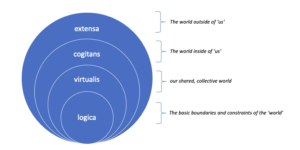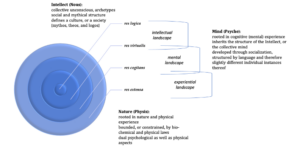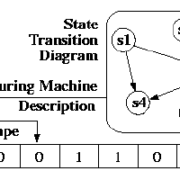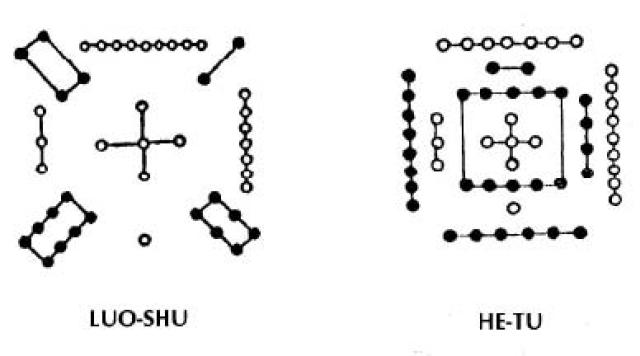On Qualified Dualism, (the) Intellect & (the) Psyche
So let us have a look at the metaphysical architecture of IRA and contextualize it, primarily within the philosophical traditions, but this will invariably blend into theology and psychology as well, for at its core, philosophy – which in this context can be considered Science writ large – and theology (Religion) can be considered two sides of the same coin when looked at from within the context of philosophy, really epistemology, itself.
If we look at the notion of what we now refer to as ‘God’ for example in the Hellenic philosophical tradition, before the Abrahamic religions entered the intellectual fray, we are presented with various rational explanations for not just the source of creation, but also with rational explanations for systems of ethics, morality and even the basic structure of society (Valdez 2015). The theo-philosophical traditions from ancient India and China take very similar (intellectual) approaches to answering these fundamental questions, even if they come up with different, culturally contextualized, answers to the same (Valdez 2016, 2019). They all presume that the natural world had a beginning, had a creator, and as such is subject to not just physical laws, but also societal, ethical and moral laws as well, all of which can be derived from – rationally – a very core set of basic beliefs and principles.
Each system no doubt presented slightly different (archetypical) principles, and as such slightly different laws, as pseudo-rational deductions, in each of the respective domains, but nonetheless they all presumed that the world itself was subject to reason, and as such we as human beings given that we are (uniquely) capable of reason, had a sort of sacred duty to not just approach and develop an understanding as to how the universe came into being, but also how, as cognitive beings within said universe, we should behave and construct society given the nature of the universe as we understood it. It is these basic intellectual building blocks in fact that Religion, at least in its Western Abrahamic variant, usurped from philosophy and held fast to until such time as the whole system was sent into upheaval when reason itself was divorced from theology and the Age of Science was born.
This idea that Religion and Science are not necessarily opposed to each other, but complement each other, a sort of qualified dualism, is buried in the very root of both the Western and Eastern philosophical traditions in fact, it just shows up in different forms but ultimately rests on the idea that there are (at least) two very different ways of looking at the world and while you may find proponents of one way or another, the way forward is toward a higher order level of understanding which bridges the two. This is essentially what we are presented with, again in various forms, in the Western post-Enlightenment philosophical tradition, with for example the dualism put forward by Descartes of reality as mind and matter.
We also find a dualistic bent to Kant’s metaphysics as well, where the notion of the world as it truly is held in contrast to the world as it appears to us, or even the world as Will and Representation as presented by Schopenhauer (Schopenhauer, 1818), each of which represents its own unique perspective on the world as two separate, archetypal concepts that are in some way contrary to each other but at the same time must both be understood if one is to have a holistic picture of the world. We find similar dualistic metaphysical systems at the heart of Eastern philosophy as well, Daoism and Yin-Yang philosophy as perhaps the best example, but with Indian variants such as Samkhya as well, which conceives of the world as a combination of both spirit (Purusha) and matter (Prakriti).
Somewhat ironically perhaps, it is with Quantum Mechanics that we find perhaps the most profound illustration of this qualified dualistic idea, where matter at its most basic level, below the Planck scale, exhibits both wave-like and particle-like characteristics, and as such represents really a whole new kind of substance, one that we are still struggling to define given some of the basic intellectual constraints we carry with us from post-Enlightenment philosophy, i.e. classical physics.
Our solve to this problem of the inherent dualistic structure of reality is not unique in some sense, given that it is process focused, and describes a system of evolution, or change, through time, which is essentially the idea that is presented by Kant, whose metaphysics is at its core process focused, but also Whitehead and Bohm in more modern Western philosophical variants who are more explicit in their process-based ontology. But perhaps the best example of this type of qualified dualism, as we have mentioned before and whose equivalence with IRA we attempt to demonstrate herein, is of course the I Ching, which is founded on the very principle of change, and whose binary (dualistic) structure lends itself (following Leibniz) toward translation into the language of modern computing systems which is also in and of itself fundamental binary, i.e. dualistic.
Given this context then, let us look at how IRA is representative of this very same qualified dualistic metaphysical structure. IRA, again as a metaphysical reference architecture, is a system by which ideas – in the Platonic sense – become reality, or materialize – through a three stage, quantum idealogical based process which we describe as idealization, conceptualization, and actualization. In this sense, given that we are working with ideas as primary (following Blaha who follows Plato), we call IRA an epistemological interpretation of Quantum Mechanics. The difference between this intellectual edifice and the one that is reflected in the von-Neumann-Wigner (Stapp) interpretation of Quantum Mechanics proper is that our ontology is specifically epistemological rather than indirectly so.
With IRA we take a multi-dimensional information transformative view of reality, which gives us an opportunity to view the world, as we have come to know it through our own, direct experience, as an unfolding of consciousness, through us as its representatives of sorts, as reflective of being (in the Platonic sense), or existence more generally, which in a very real and fundamental (epistemological) sense, depends on cognizers, experiencers, in order for it, as existence, to become ‘real’. This truth is thrust upon us with Quantum Mechanics as the problem of the wavefunction collapse – if no act of measurement is taken in the sub-atomic system, no definition position or momentum of that which is being measured can be determined. (The act of) measurement is a requirement for definition (knowledge) itself at the scale of the basic fabric of physical reality. This is where mind and matter meet.
Another way to look at this, again using a sort of qualified dualistic lens, is that objective reality is both co-dependent on and co-terminal with its subjective counterpart, the latter of which is typically referred to as consciousness (the dreaded c word). From this higher order perspective then, when knowledge itself is conceived of a sort of unfolding of experience with both objective as well as subjective properties, each perspective bearing upon the notion of the whole and each perspective being fundamental, critical to the understanding of the process itself. While we follow our predecessors, we attempt here with IRA to put this qualified dualistic notion of reality, this knowledge based structure that we describe herein, on a sound and rigorous (quantum) mathematical structure.
IRA then starts with this basic assumption, that the resolution to the challenges of dualistic ontologies generally speaking is to raise them up a level to a higher order system which subsumes the lower order perspectives. To this end, following the most current research related to both Quantum Mechanics as well as Cosmology (Black Hole Physics, the holographic principle), as well as modern computing (theoretical computer science), we start with information, another name for knowledge (epistemology) as fundamental to our metaphysical architecture. As such, we look to understand, to explicate, how it is that information, in the form of Platonic ideas, moves through time and space. This is the essential position we take with IRA and the essential mechanical problem it is looking to solve.
We take this as a metaphysical starting point, and as such can construct, or leverage, the whole of theoretical computer science into the model itself. IRA is an information processing system, generally speaking IRA is an Information Processing Turing Machine. We make some assumptions about processing power and memory (i.e. that we have no limits in this regard), but the algorithmic (epistemic process based) structure we adopt, one that is rooted in Quantum Measurement Theory, is essentially one that captures, processes and organizes and then interprets information – from one interface to the other in a state of constant change that reflects the interaction of cognitive, sentient beings (in their most generic form) from within both their Intellectual environment and their physical environment.
We construct this information processing system based on a four-tier architecture, going from the most abstract, most fundamental, down to the most specific and particular – again rooting the whole system in our theoretical Information Processing Turing Machine which has the ability to both store, and process information. We follow the Cartesian split between mind and matter, res cogitans and res extensa specifically but we extend the notion of thinking (res cogitans) to include, or inherit really, higher order levels of abstraction – this is our res virtualis, or virtual world which has a shared, cross-cultural component which has a rough correspondence with the collective unconsciousness of Jung, the so-called storehouse of archetypes.
We extend IRA into the Intellect however, to establish a Kantian framework where the phenomenal world consists of a mapping to the noumenal world (res cogitans and res virtualis) as well as a set of principles and laws that are necessary for the world to be a rational place. This latter transcendental reality we call res logica in our model, a sort of storehouse of core concepts and rules that provides the basic framework for cognitive, sentient being in that particular universe, which more or less corresponds to Kant’s collection of transcendental objects, from which he bounds metaphysics in his Critique. In this four-tiered structure then, we look to understand how it is that ideas, using this term in the Platonic sense, come to be, or exist.

IRA’s four-tiered architecture
By so doing, we extend the mind-matter distinction further back, or higher up, into the intellectual landscape which we, following recent developments in psychology (and theology and philosophy) extend into a shared, collective idealogical realm (Plato, Jung), which in turn derives its basic structure from a higher order, logical, realm, out of which a more complete understanding of the universe, of reality really, naturally emerges.
From a Western philosophical perspective, we follow the idealist tact of Plato into the German idealistic systems conceived of by both Kant and in turn Schopenhauer, although we use language that is familiar to us through Descartes to identify the various metaphysical architectural tiers (dimensions) through which an idea must be transposed (through concepts and actions) in order for it to become manifest in the physical world, i.e. res cogitans, res extensa, etc.
We further delineate the different layers of abstraction in our architecture as the intellectual (nous), the mental (psyche) and the experiential (physis) respectively, yielding a metaphysical repository for the Jung’s collective unconscious and archetypes in the Intellectual domain (following Plato and forms, eidos), from which these idealogical structures are inherited in the mental, or cognitive domain. This cognitive structure then is utilized in conjunction with our current understanding of the state of the world (which is a function of the actual world itself along with our current mental state), for the determination of the course of action, behaviorally.

The Intellect, Mind and Body Relationship in IRA
From an Eastern philosophical perspective, we see how it is that our model aligns with the metaphysics of the I Ching, one of the oldest extant philosophical tracts in existence which also presumes that Man (psyche) mediates between the world of Heaven (nous) and Earth (physis), establishing not just the parallels between our metaphysical architecture and the I Ching (metaphysical structure) itself, but also revealing the underlying triadic structure upon which Platonic idealism rests essentially.
What we end up with, is an information based metaphysical system architecture that is rooted in the processing, really transformation and transmutation, of information from higher order levels of reality to lower forms, as mediated by us as cognitive, sentient being alive and active in this universe.









Leave a Reply
Want to join the discussion?Feel free to contribute!